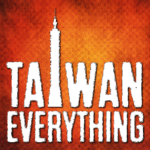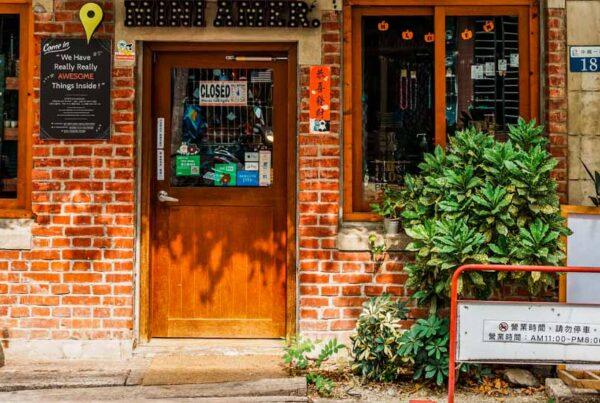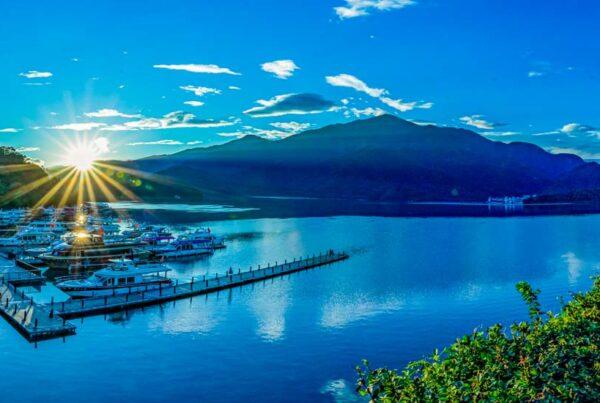Explore the main attractions around Sun Moon Lake!
Sun Moon Lake, located close to the geographical center of Taiwan, is one of the island’s top tourist attractions. Since there is no railway service to the lake, getting there by public transport means taking a bus. There are two main options: taking a Taiwan Tourist Shuttle bus on the Sun Moon Lake Route, or taking a local public bus from the nearby town of Checheng, the terminal station of the Jiji Line, a railway branch line popular with tourists.
You can board a bus on the Sun Moon Lake Route at Taichung Gancheng Station (a main bus station in central Taichung), Taichung Railway Station (conventional railway), and THSR Taichung Station (high-speed rail). It takes about 90 minutes to get from central Taichung to the lake. If you have time and want to explore more of Nantou County than just Sun Moon Lake, you might consider getting off at Puli, to the north of the lake. This is a town in a mountain basin known for its pure waters and quality produce. Among the attractions here are the Puli Winery, Guangxing Paper Mill, and impressive Chung Tai Chan Monastery. Between Puli and Sun Moon Lake the bus also stops at the settlement of Taomikeng, where you can visit the Paper Dome, a place of worship made of paper.

Puli Winery is in the heart of old Puli. It is the famed producer of Taiwan’s version of Shaohsing Wine, made from rice. There is an interesting “wine culture” museum on the second floor. At the winery you can try Shaohsing popsicles and sausages.
Also read:
Wineries and Distilleries in the TAICHUNG/NANTOU Area


Guangxing Paper Mill is a great place to learn about the traditional process of paper making. You can even get your hands dirty learning out to make paper, including steps such as paper formation, paper pressing, paper drying and rubbing.
KLOOK:
Puli Culture Day Trip
Cingjing Farm and Puli Day Tour
BOOKING.COM
Hotels in Puli

Chung Tai Chan Monastery, built in the shape of a Buddhist devotee sitting in the lotus position, seems to soar into the sky. The large halls and pretty parkland are home to statuary of striking size and and wonderful aesthetic accomplishment.

The Paper Dome is the main attraction at Taomi Eco Village. Constructed using 58 five-foot-high cardboard columns, the church is a memorial to both Taiwan’s 921 Earthquake and the Great Hanshin Earthquake that ravaged the city of Kobe, Japan in 1995. In fact, the Paper Dome was originally constructed in Kobe as a temporary replacement for the Takatori Catholic Church, destroyed in the earthquake. In 2005, however, the structure was relocated to Taiwan – a country also blighted by earthquakes – as a symbol of solidarity and friendship.
Tai-Yi Maple Resort (楓樺台一渡假村) Add: No. 176, Sec. 1, Zhongshan Rd., Puli Township, Nantou County (南投縣埔里鎮中山路一段176號) Tel: (049) 299-7848 Website: www.taiifarm.com Finally, you’ll arrive at the village of Shuishe, on the northwest corner of Sun Moon Lake. From there you have the option to explore most of the way around the lake on a Nantou Bus route, which follows the lakeshore east from Shuishe, passing Wenwu Temple, the Sun Moon Lake Ropeway station (where you can take the cable car to the Formosan Aboriginal Culture Village), Ita Thao Village, Ci’en Pagoda, and Xuanguang Temple. Alternatively, from Shuishe Pier you can also take a boat to Ita Thao or Xuanguang Temple. KLOOK: Monumental Wenwu Temple, on the north side of the lake, was built in China’s Northern Dynasties style (386~581 AD). It was severely damaged in the 921 Earthquake but, if anything, today surpasses its former glory. Its distinctive, prominent imperial-yellow glazed-tile roofing draws the eye from all round the lake. “Wen” and “Wu” mean “civil” and “martial”; the temple is dedicated to scholar Confucius and to warriors Guan Gong and Yue Fei, major figures in Chinese history. By way of example, teachers and civil servants will make offerings to the former, policemen and businessmen to the latter. The two giant entrance-guardian stone lions are claimed as Taiwan’s largest. From close to Ita Thao you can take the Sun Moon Lake Ropeway across the mountains to the Formosan Aboriginal Culture Village theme park, and enjoy breathtaking views of the lake along the way. Ita Thao is the main settlement of the Thao people, one of the smallest of Taiwan’s indigenous groups. Among its scores of eateries and tourist-oriented retail outlets are a good number selling indigenous fare and handicrafts. Ci’en Pagoda, high above the lake, can be reached via a trail from Xuanguang Temple. Your reward at the top are sweeping views of the lake. Xuanguang Temple, a short walk from Xuanguang Pier, enshrines a statue of the famous monk Xuanzang, sent to India by Tang Dynasty Emperor Taizong to learn about Buddhism and bring back scriptures. His sojourn forms the core of the adventures related in the classic Journey to the West. The second main option to get to Sun Moon Lake by public transport is taking the Jiji Line to its terminus, Checheng, and taking a bus from there. Trains on the Jiji Line start from Ershui Railway Station in Changhua County. Tickets one way are NT$90, and the trip takes about 50 minutes. Consider getting off at Jiji to explore this interesting town. Checheng is also worth a closer look, for its rich history (notably the Checheng Wood Museum and Mingtan Power Station). The Jiji Branch Line, popular with tourists, runs 29.7 km from the western plains into the mountains along the Zhuoshui River, from the town of Ershui to the town of Checheng. It was built by the Japanese colonial government in the 1920s to transport materials for Taiwan’s first great hydroelectric-dam construction project at nearby Sun Moon Lake, and soon opened for passenger traffic. The colorful air-conditioned trains slide along past farms and through small towns and thick green forests. KLOOK: Checheng is the terminus of Jiji Branch Line. It bristles with attractive wood-built structures. In the Qing Dynasty this was a camphor-production settlement. The Japanese first built a push-trolley railway for sugarcane and people transport, then replaced it with the Jiji Line. Logging was key thereafter, local operations eventually shut down in the 1980s. Today the town is a popular tourist destination. There are eight buses a day between Checheng and Sun Moon Lake. The trip to Shuishe takes about 40 minutes, and costs NT$100. Consider getting off just past the town of Shuili on the way, at the excellent Snake Kiln Ceramics Cultural Park, and at Sun Moon Lake’s Xiangshan Visitor Center, to marvel at the center’s unique architecture and get a first glimpse of the lake. Shuili Snake Kiln, located southeast of Shuili town is a big, rambling wooden complex that lies hidden away in forest cover beside Highway 16. Built on a slope to get the heat inside to move upward – the firewood is placed in the lower section – the brick kiln looks very much like a fat snake. A priceless historical relic, it’s today only rarely fired, to keep it in condition. It takes 3~4 days and an incredible amount of wood to bring it up to, and keep it at, the desired 1,100 degrees Celsius. The ash created within comes to rest on the ceramic pieces, creating the inimitable wood-fired look. When the kiln is not in operation you can walk through it. The striking Xiangshan Visitor Center is a great place for a nice coffee, served with a large dose of idyllic scenery. Located at the end of a small, tranquil bay, the broad-shouldered complex is fronted by a reflecting pool that blends seamlessly with the lake waters. The bright glass-walled café here has outdoor seating; patrons go noticeably quiet after sitting, soaking in the soothing mountain-backed vista. Be sure to explore the exhibit hall, which has first-rate information displays, short films, and a 3D film on the national scenic area, all with English. Taichung Gancheng Station (臺中干城站) — Taichung Railway Station (臺鐵臺中站) — Daqing Railway Station (臺鐵大慶站) — THSR Taichung Station (高鐵臺中站) — Puli Visitor Center (埔里遊客中心) — New Era Sculpture Park (牛耳石雕公園) New Era Art Resort and Spa is a sculpture park dedicated to Taiwanese artist Lin Yuan. The resort has been developed around his work. A farmer by trade, Lin began sculpting at the ripe age of 65, and by the time he passed away at the age of 79 he had created over 10,000 works of art – over 3,000 stone sculptures, along with myriad paintings and embroideries. His sculptures, mostly of animals, have a primitive, totemic quality that makes them truly at home outdoors. National Chi Nan University (暨南大學) — Taomikeng (Paper Dome) (桃米坑[紙教堂]) Tucked away on the southern border of Puli Township, Taomi was once an ordinary rural village, where the residents’ primary source of income was the cultivation of bamboo. Reluctant to industrialize their operations, however, by the end of the 20th century the villagers were struggling economically. Then, on September 21, 1999, a major earthquake measuring 7.3 on the Richter scale struck the island – its epicenter mere kilometers away in Jiji Township – and well over half of the houses in Taomi were destroyed. The people of the village, saw the destruction as an opportunity to start anew. Lifelong farmers began to retrain as eco-tour guides, open guesthouses, and transform old paddy fields into a wetland park and other types of area where wildlife could thrive. Dayan (Seshui Community) (大雁[澀水社區]) — Yuchi (魚池) — Antique Assam Tea Farm (日月老茶廠) The black tea grown in Yuchi was originally Assam tea (C. sinensis var. assamica) imported from India by the Japanese during the Japanese colonial period (1895-1945). The warm, rainy climate of Nantou County was deemed perfect for black tea cultivation, and over the years the Yuchi Tea Research and Extension Station has tweaked the original Assam tea to create new cultivars. The most popular of these is the No. 18 – in fact a cross-breed of C. sinensis var. assamica and wild Taiwanese mountain tea (C. sinensis f. formosensis) – which has a distinctive cinnamon scent underlain with a subtle hint of mint. At Antique Assam Tea Farm the tea leaves are laid out to dry for up to 18 hours, then poured through a hatch in the floor into rolling machines, where the juices are gently squeezed out and the leaves begin to ferment. Following that is a stint in the perpetually moist fermenting room. The leaves are then dried and a team of workers painstakingly strips them from the twigs by hand. Sun Moon Lake (日月潭) Fare: NT$190 one way; NT$350 round trip (cash, EasyCard, and iPASS card accepted) Departures: Every 35 minutes to one hour on weekdays (every 15 minutes to one hour on weekends and holidays); first bus from Taichung Gancheng Station at 7:45am, last bus at 7:45pm; first bus from Sun Moon Lake at 7:25am, last bus at 7:25pm. Note: A few of the buses stop at the Formosan Aboriginal Culture Village and the Xiangshan Visitor Center. For more details, please check the timetable on the Sun Moon Lake Route website. Great post by Nick Kembel (Spiritual Travels):
Sun Moon Lake Ropeway Combo Ticket
Formosan Aboriginal Culture Village Day Trip




Jiji

Jiji Township and Sky Bridge Visit


Stops of the Taiwan Tourist Shuttle Sun Moon Lake Route




About the author

















